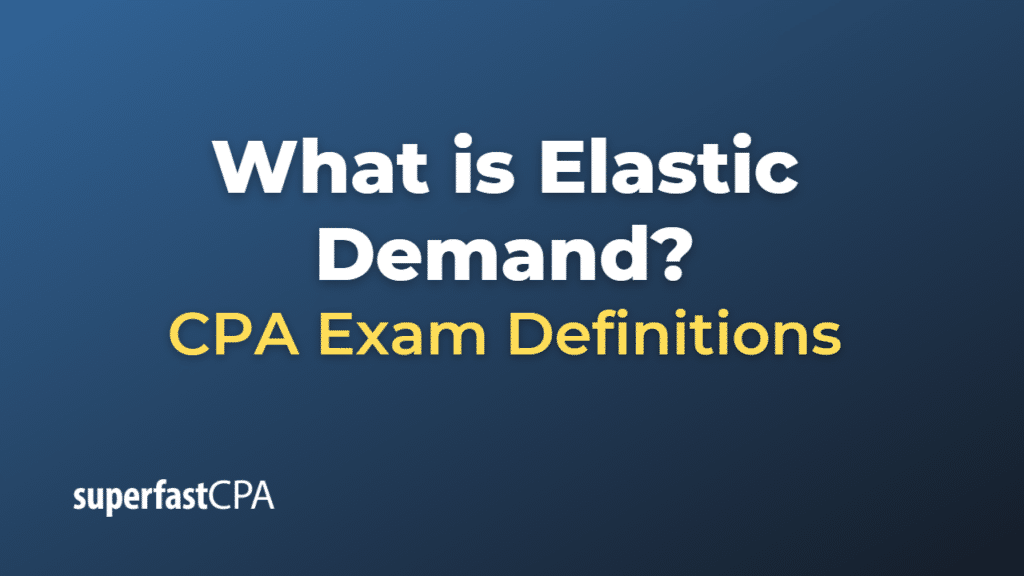Elastic Demand
Elastic demand in economics refers to a market condition where the quantity demanded for a product changes more than proportionately in response to a change in the product’s price.
If a product has elastic demand, a relatively small price increase leads to a relatively large decrease in quantity demanded, and vice versa. In other words, consumers are sensitive to price changes when demand is elastic.
The price elasticity of demand is calculated as the percentage change in quantity demanded divided by the percentage change in price. If this ratio (in absolute value) is greater than 1, then demand is said to be elastic.
For example, let’s say that a 10% decrease in the price of a product results in a 20% increase in the quantity demanded. In this case, the price elasticity of demand would be -20%/10% = -2, which is greater than 1 in absolute terms. Therefore, demand for this product is elastic.
Goods and services that are not necessary or have many substitutes typically have elastic demand. For instance, demand for luxury goods, specific brands of products, or tourism-related services tends to be elastic, as consumers can easily forego them or switch to other options if prices rise.
Example of Elastic Demand
Let’s consider the market for gourmet coffee, a product that could be considered a luxury for most people and that has many available substitutes.
Suppose the current price of a cup of gourmet coffee at a local cafe is $5, and they sell 100 cups per day. The cafe decides to increase the price by 20% to $6 per cup.
As a response to the price increase, customers decide to either cut back on their coffee consumption or switch to cheaper alternatives. As a result, the daily sales decrease to 70 cups.
In this case, the price elasticity of demand can be calculated as follows:
Percentage change in quantity demanded = (70 – 100) / 100 = -30%
Percentage change in price = ($6 – $5) / $5 = 20%
Price elasticity of demand = -30% / 20% = -1.5
The absolute value of the price elasticity of demand is greater than 1, indicating that the demand for gourmet coffee at this cafe is elastic. The significant decrease in quantity demanded in response to the price increase shows that customers are quite sensitive to changes in the price of gourmet coffee, likely because they see it as a luxury and know that there are cheaper alternatives available.













